+Search query
-Structure paper
| Title | Rare ribosomal RNA sequences from archaea stabilize the bacterial ribosome. |
|---|---|
| Journal, issue, pages | Nucleic Acids Res, Vol. 51, Issue 4, Page 1880-1894, Year 2023 |
| Publish date | Feb 28, 2023 |
 Authors Authors | Amos J Nissley / Petar I Penev / Zoe L Watson / Jillian F Banfield / Jamie H D Cate /  |
| PubMed Abstract | The ribosome serves as the universally conserved translator of the genetic code into proteins and supports life across diverse temperatures ranging from below freezing to above 120°C. Ribosomes are ...The ribosome serves as the universally conserved translator of the genetic code into proteins and supports life across diverse temperatures ranging from below freezing to above 120°C. Ribosomes are capable of functioning across this wide range of temperatures even though the catalytic site for peptide bond formation, the peptidyl transferase center, is nearly universally conserved. Here we find that Thermoproteota, a phylum of thermophilic Archaea, substitute cytidine for uridine at large subunit rRNA positions 2554 and 2555 (Escherichia coli numbering) in the A loop, immediately adjacent to the binding site for the 3'-end of A-site tRNA. We show by cryo-EM that E. coli ribosomes with uridine to cytidine mutations at these positions retain the proper fold and post-transcriptional modification of the A loop. Additionally, these mutations do not affect cellular growth, protect the large ribosomal subunit from thermal denaturation, and increase the mutational robustness of nucleotides in the peptidyl transferase center. This work identifies sequence variation across archaeal ribosomes in the peptidyl transferase center that likely confers stabilization of the ribosome at high temperatures and develops a stable mutant bacterial ribosome that can act as a scaffold for future ribosome engineering efforts. |
 External links External links |  Nucleic Acids Res / Nucleic Acids Res /  PubMed:36660825 / PubMed:36660825 /  PubMed Central PubMed Central |
| Methods | EM (single particle) |
| Resolution | 2.21 - 2.39 Å |
| Structure data | EMDB-28165: E. coli 70S ribosome with A-loop mutations U2554C and U2555C (Composite Map)  EMDB-28218: E. coli 70S ribosome with A-loop mutations U2554C and U2555C (50S Focus Refinement)  EMDB-28229: E. coli 70S ribosome with A-loop mutations U2554C and U2555C (30S Focus Refinement)  EMDB-28230: E. coli 70S ribosome with A-loop mutations U2554C and U2555C: A-site tRNA class 2 |
| Chemicals |  ChemComp-ZN: 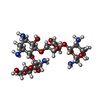 ChemComp-PAR:  ChemComp-MG: 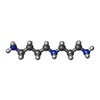 ChemComp-SPD: 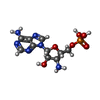 ChemComp-8AN: 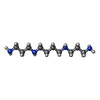 ChemComp-SPM: 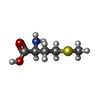 ChemComp-MET:  ChemComp-HOH: |
| Source |
|
 Keywords Keywords |  RIBOSOME / RIBOSOME /  RNA / RNA /  thermophile / A loop thermophile / A loop |
 Movie
Movie Controller
Controller Structure viewers
Structure viewers About Yorodumi Papers
About Yorodumi Papers






